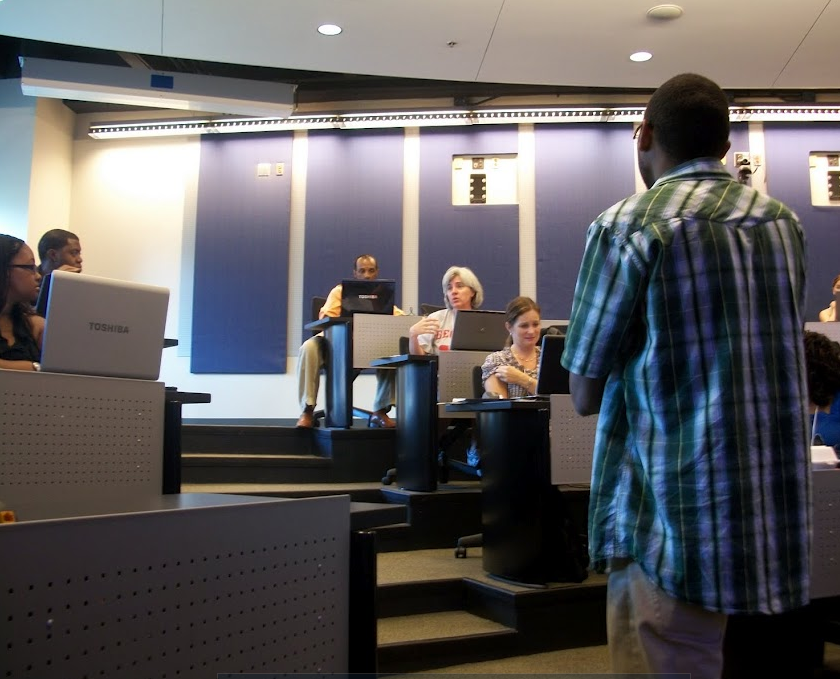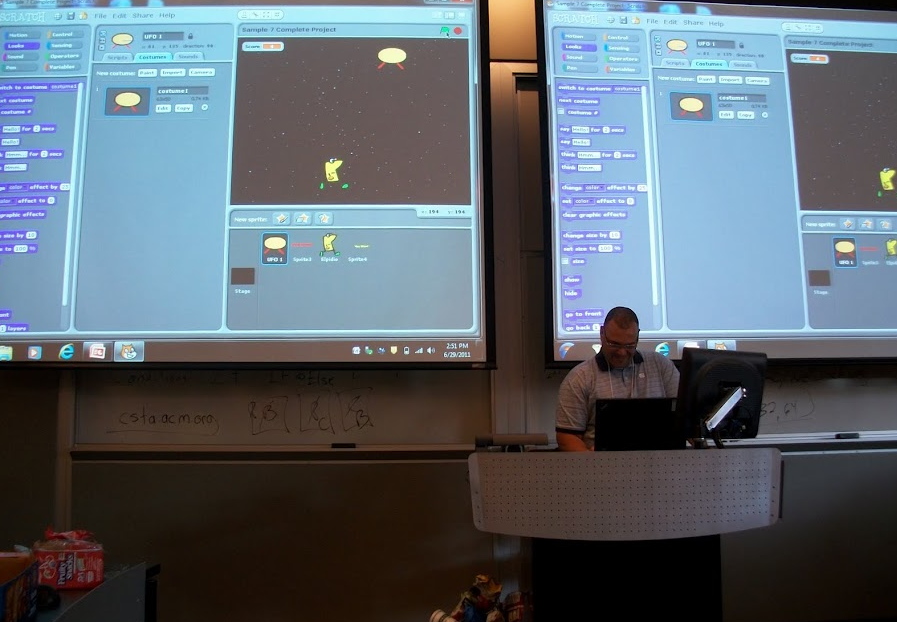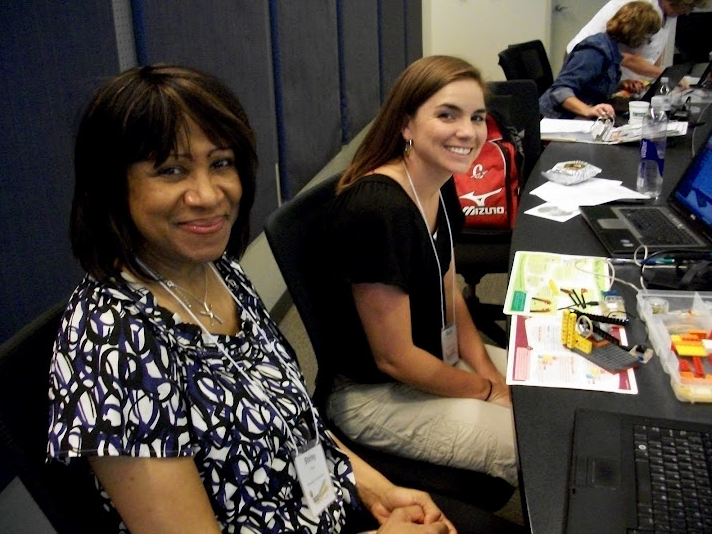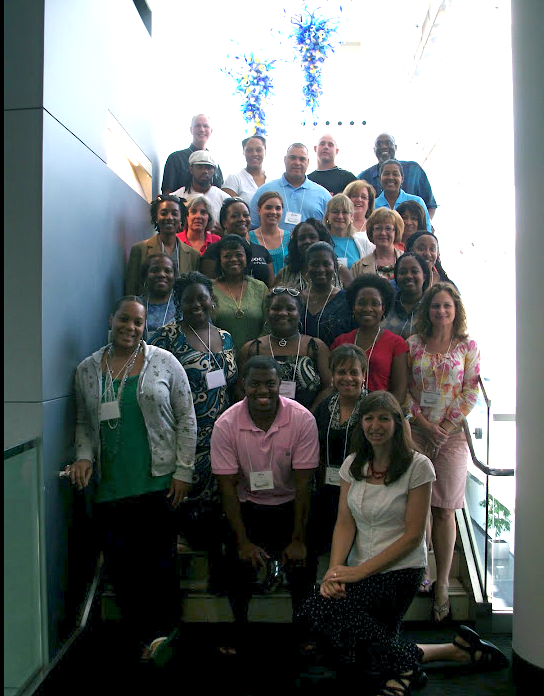A Learner’s Perspective: An Interview with Barbara Ericson of the Georgia Institute of Technology
Barbara Ericson is the Director of Computing Outreach for the Institute for Computing Education (ICE) at the College of Computing at Georgia Tech. She has been facilitating Scratch workshops for educators since 2008 and using Scratch with students in summer camps since 2006. She has been offering teacher professional development since 2004 and has reached over 450 teachers since then. But she hasn’t forgotten what it’s like to be at the beginning. “It’s really hard to move from what you know to something new. That’s a tough thing.”
Mindful of the learner, Barbara has developed her Scratch workshops to support people “who don’t feel comfortable with programming.” Her approach has been influenced by considering what support learners need and what role the facilitator can offer in providing that assistance. In a recent interview with ScratchEd, we asked Barbara if she could share some of her strategies and best practices for staying attentive to the learner’s perspective.
Slowing Down the Instructions
“I can do things fast. I’ve played with Scratch for a long time. I know where things are. I know where to click. I know what to drag but other people have trouble with that, and you might not know how much trouble they have until you walk around and see them trying to do it. I’ve realized that you’ve got to go slow and you’ve got to repeat yourself over and over again before they might actually see what you're doing and have a chance to do it too. And I have written instructions too so that people who get it aren’t waiting and can work on extensions.”

Teaching in Increments
“I try to keep projects very small when I’m introducing something and then I ask people to extend it or add to it because the biggest issue when I’m teaching teachers, as it is for students too, is the huge range in ability. There are people who can barely do the three little things you're trying to do. They can't figure out what you clicked on, ‘Where?’ My strategy is to do it three times. The first time I do it people are kind of going, ‘Oh, she’s talking.’ Second time I do it they're like, ‘Where is she? What’s she doing?’ Third time I do it they might actually follow it–
The biggest thing is to make sure that you have an activity that is small enough that anybody can do it. They're not going to get frustrated and they’ll find it funny or interesting. And that there’s enough stuff that can be extended onto it so the people that get it can add to it while the other people are still just trying to get it. Then you could have people that extended it show what they’ve done. The other people go, ‘Oh, you can do that too? That’s cool. How’d you do that?’”

Checking In with Individuals
“That’s also something I learned. Do not stand in the front of the class and ask if there are any questions and assume if nobody raises their hand that everything’s fine. It doesn’t mean that there are no questions. It means they don’t want to ask you anything yet. And I learned this long ago so that’s why I break things up. I do a little bit of demonstration, I leave it up on the board, and then I wander around. Sometimes I don’t even ask if they have questions. I just say, ‘How’s it going?’ If they have questions, they’ll ask me. I’ll even kneel next to people so I’m not intimidating - I’m not over your shoulder. I’ll say, ‘Oh, how’s it going?’ ‘I’m having trouble with this.’ Then don’t grab the keyboard or the mouse from them. Have them do it.
What’s funny about doing things that way is I’ll have people say, ‘Me next.’ They won't ask their question because they don’t want to look stupid in front of everybody but they’ll say, ‘I want to be next in the list of people that you're walking around helping.’”

Acknowledging Diverse Interests
“I think the biggest thing to do is always make sure that you have a variety of activities. We do lots of activities and I’d say that one of the biggest things I always recommend for people is there is no one thing that we do that gets everybody excited.”

During her teacher workshops, Barbara keeps new Scratchers engaged by building a community of learners. With the learner’s perspective in mind, she encourages sharing of ideas and models that everyone is responsible for helping each other, and her, learn more. “That’s the other thing I’ve also learned from doing teacher workshops is you’ll have some great teachers and lots of great ideas and so definitely ask them to share. ‘How did you do this? What do you do differently?’ Other people will be like, ‘Oh, can I get your materials?’ They don’t listen to me as well as they listen to each other.”
Find out more information and discover resources on Georgia Tech's ICE distance learning website including Scratch tutorials and sample projects.


Dear Ms. Ericson,
Thank you so much for your story. I've just begun experimenting with Scratch (it's part of my coursework as an undergrad middle-school math ed major at Arcadia University in Glenside, PA).
Your story addresses many of the concerns that I would have about addressing Scratch to my future students; in fact, your story goes one step further, as your techniques for making students comfortable could be applied to any type of technology.
Thanks again for sharing your techniques for being an effective teacher!
This is very nice! I hope someday I could attend to your workshops.